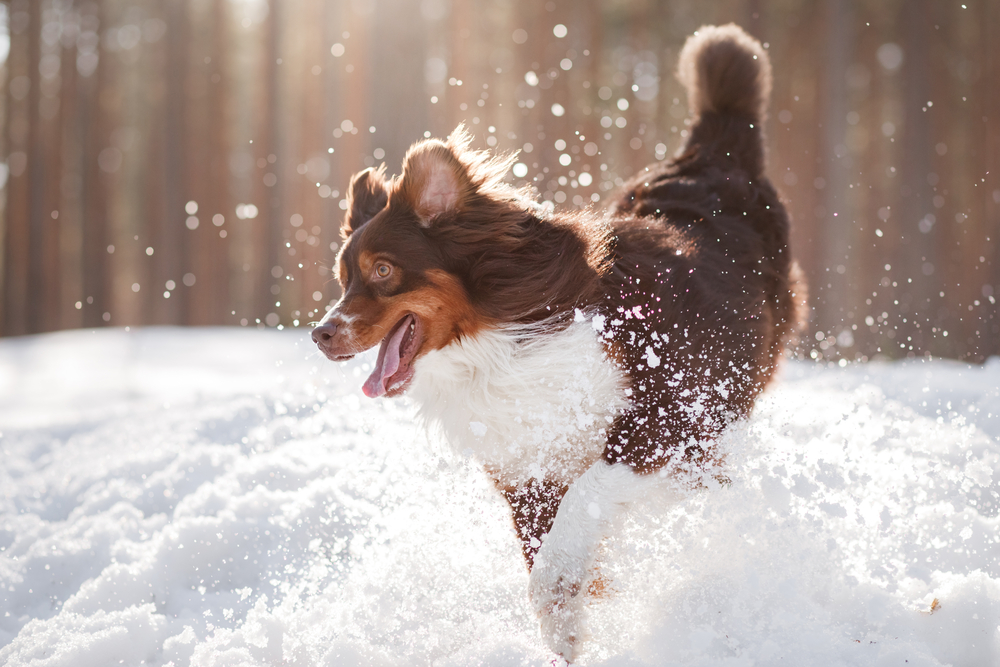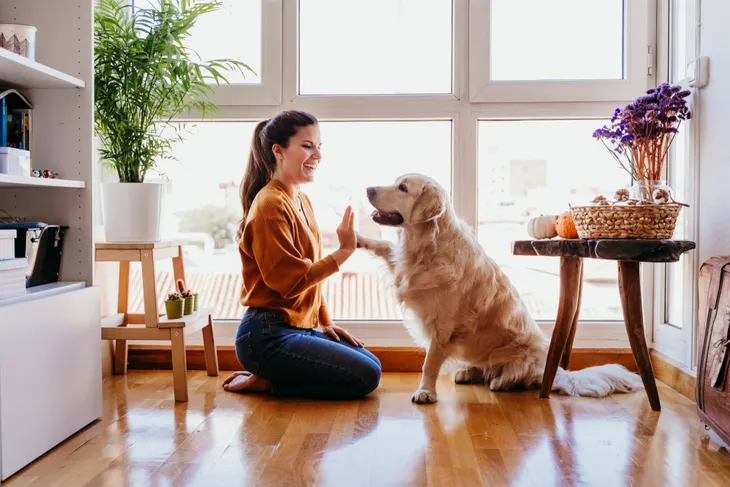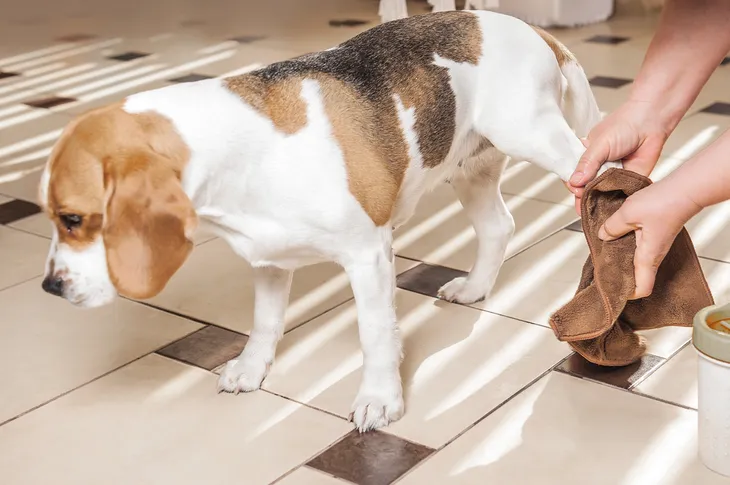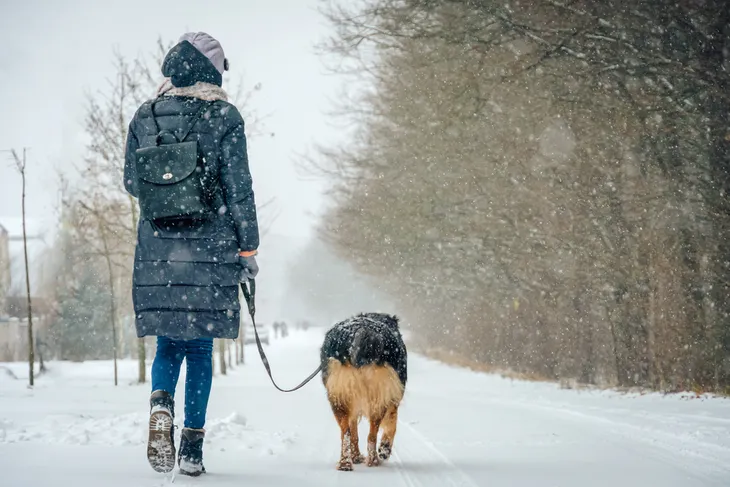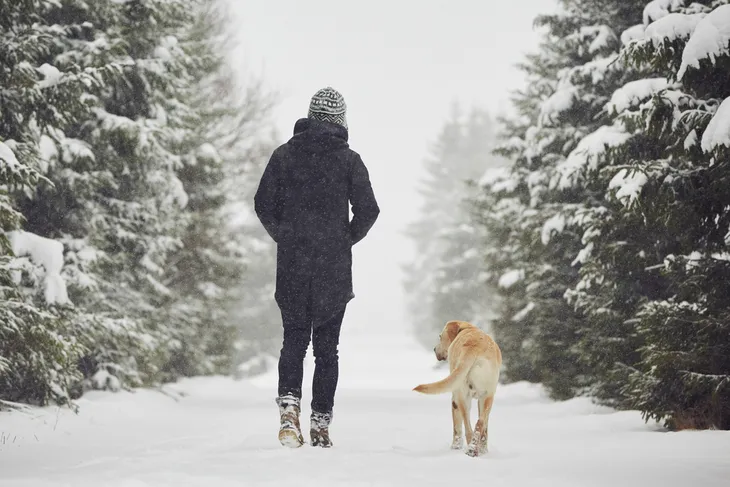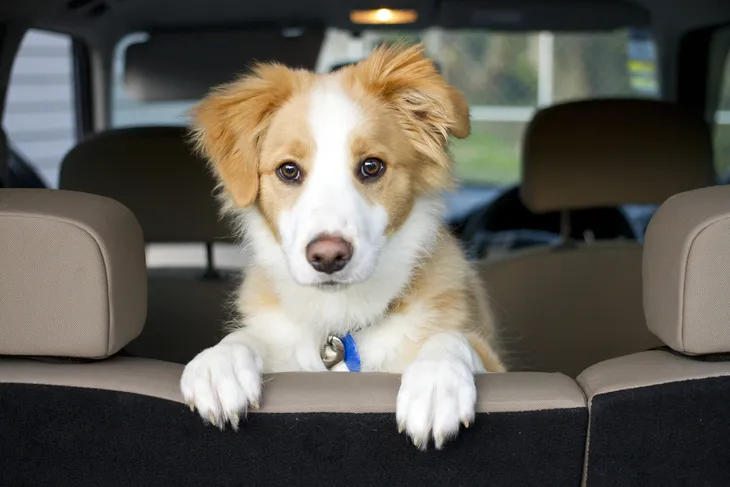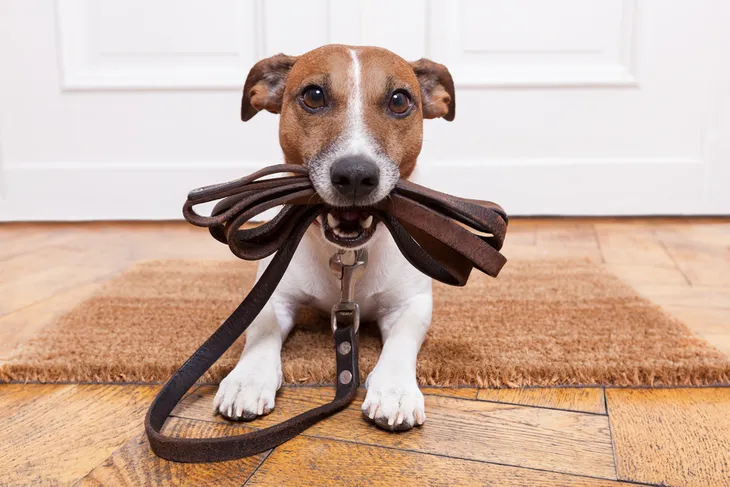When it comes to helping your dog endure seasonal weather temperatures, the general rule maintains that if it’s too cold for you, then it’s probably too cold for them too. But keeping your pet safe and comfortable in the wintertime is often more involved than keeping an eye on the weather channel.
Maintaining your dog’s health come wintertime requires being proactive, mindful, and caring. Having said that, even the most conscientious dog owner may discover a few winter-care blind spots. Don’t worry! Today, we’re going to break down all the steps you should take to help protect your dog from cold-weather health hazards. Let’s go!
Know Your Dog
You may know all about your dog’s favorite toys and treats, but are you familiar with their tolerance for cold weather? No two dogs are created equal, which is why it’s so important to understand the impact that their coat, body fat, activity level, and general health has on their ability to withstand frigid winter temperatures.
Elderly pets may be more prone to slipping or painful arthritis flare-ups. Your short-haired dog may get way too cold too fast. Short-legged dogs may become colder faster too, due to how close their bodies and bellies are to the ground. Be sure to monitor your pet’s behavior when the temperature starts falling, and address any questions or concerns that you may have with your veterinarian.
Dress for the Weather
Long-haired pets can weather cooler temperatures with ease, but that’s not typically the case for their short-haired counterparts. Short-haired breeds aren’t naturally equipped to deal with outdoors come wintertime. So, if you’re hoping to get them outside and running around, consider investing in some outerwear.
Little sweaters, coats, and the like are affordable, easy to put on, and an incredibly effective way to keep your pet warm when they need it most. Your dog may resist their new digs, but just be patient. Eventually, they will come to love their new wardrobe.
Wipe Them Down
Walking outdoors in the winter poses more than just a cold risk. If all your dog had to do was interact with ice and snow, there wouldn’t be much cause for concern. Unfortunately, the winter weather also inspires us humans to use more harmful surface-clearing substances than we’re required to in the summer.
Driveway salt, antifreeze, and deicers coat most outdoor surfaces in the winter months. They sure do help people get around easier, but they make life as a dog much more difficult. Even a short walk around the block can cause these toxic substances to build-up on your dog’s feet, which is why you must make a habit of wiping down your dog’s paws with a towel every time they come back inside.
Chip and Collar
The wintertime can be a stressful ordeal for your dog. Not only is it cold, but dogs frequently lose their scent in the ice and snow, which can lead to disorientation and becoming lost. Anxiety-prone dogs often get spooked by winter storms too.
Eliminating these common winter risks are as simple as fitting your dog with an engraved collar, getting them chipped, and never taking them off their leash.
Steer Clear of Ice
Under no circumstances should you consider taking your dog for a walk on a frozen body of water. Leash or no leash, frozen ponds, and lakes can be unpredictable and incredibly dangerous.
Traversing over frozen bodies of water is dangerous for you too. Should the ice crack and your pet fall in, your instinct to save them could put you in danger too.
Keep them Inside
Some families prefer to keep their pets from wandering aimlessly around their homes by keeping their dogs outdoors all year round. If you live in an area that’s prone to rough winters, this should be avoided.
Those that do insist on keeping their dogs outside must ensure that they provide them with a reliable shelter from the cold and the wind. The flood of the shelter should rest above the ground and be covered with thick bedding. A pet-safe heated water bowl is also a must and will save pet owners from having to replace a frozen water dish multiple times throughout the day.
Don’t Leave Them in the Car
Much of the conversation around unattended dogs happens in the summer months. Leaving a dog inside a hot car is detrimental to their health and could get you in a lot of trouble with the law.
Just because the sun isn’t beating down as intensely in the wintertime, doesn’t give you the all clear to go shopping with your dog in the passenger seat. Vehicles can trap cold too, so bring them in the store with you or leave them at home while you step out.
Limit Time Outdoors
The general axiom states that if the weather outside is too cold for you then it’s probably too cold for your dog. When outside on a walk, hold to this wisdom to monitor your dog’s exposure to frigid temperatures.
Owners of older pets should be particularly watchful when accompanying their dog outdoors in the winter. Ill, thin, and aging pets are more susceptible to the cold and should be treated accordingly.
Feed Them More
If you pay closer attention to your dog’s eating patterns as the season’s change, you may notice an increase in their appetite as the days get shorter and the temperature drops. That’s because your dog is instinctively wired to prepare for the winter. So what should you do about it?
Feed them more. Dogs burn a lot of extra calories trying to keep their bodies warm in the winter. To avoid dramatic wintertime weight loss, pet owners must account for these seasonal changes by increasing their intake of food.
Get a Humidifier
Winter can sometimes feel like an all-out attack on your body. The cold weather can limit your exposure to natural light, slippery surfaces can lead to falls, and dry and cold air can lead to itchy and chapped skin.
Again, if it helps you survive the symptoms of winter then it probably helps your dog too. Take humidifiers for example. Investing in a cool-mist indoor humidifier will help alleviate your dog’s itchy and dry skin and help them breathe easier.
Go Light on the Clippers
Grooming can be an incredibly beneficial routine for your pet. It encourages healthy skin and lessens the greasiness of their coat. But taking your dog to the groomers to get clipped should be explicitly reserved for the warmer seasons.
Leaving their coat longer in the wintertime will provide them with much more, and much-needed natural warmth. If you’re at all concerned with the state of their coat, increase how often you brush them in between puppy spa appointments.
The Takeaway
Holiday shopping, switching out your tires, shoveling walkways, and salting pavement can certainly add a lot to an already full slate of chores. As a result, it’s easy to forget that your dog is having just as hard of a time dealing with the changing season as you are.
The real key to protecting your dog from cold weather hazards is being as mindful of their experience as you can be. Monitor how they act in the cold, follow the tips that you just read and make both of your lives easier and safer this winter.
